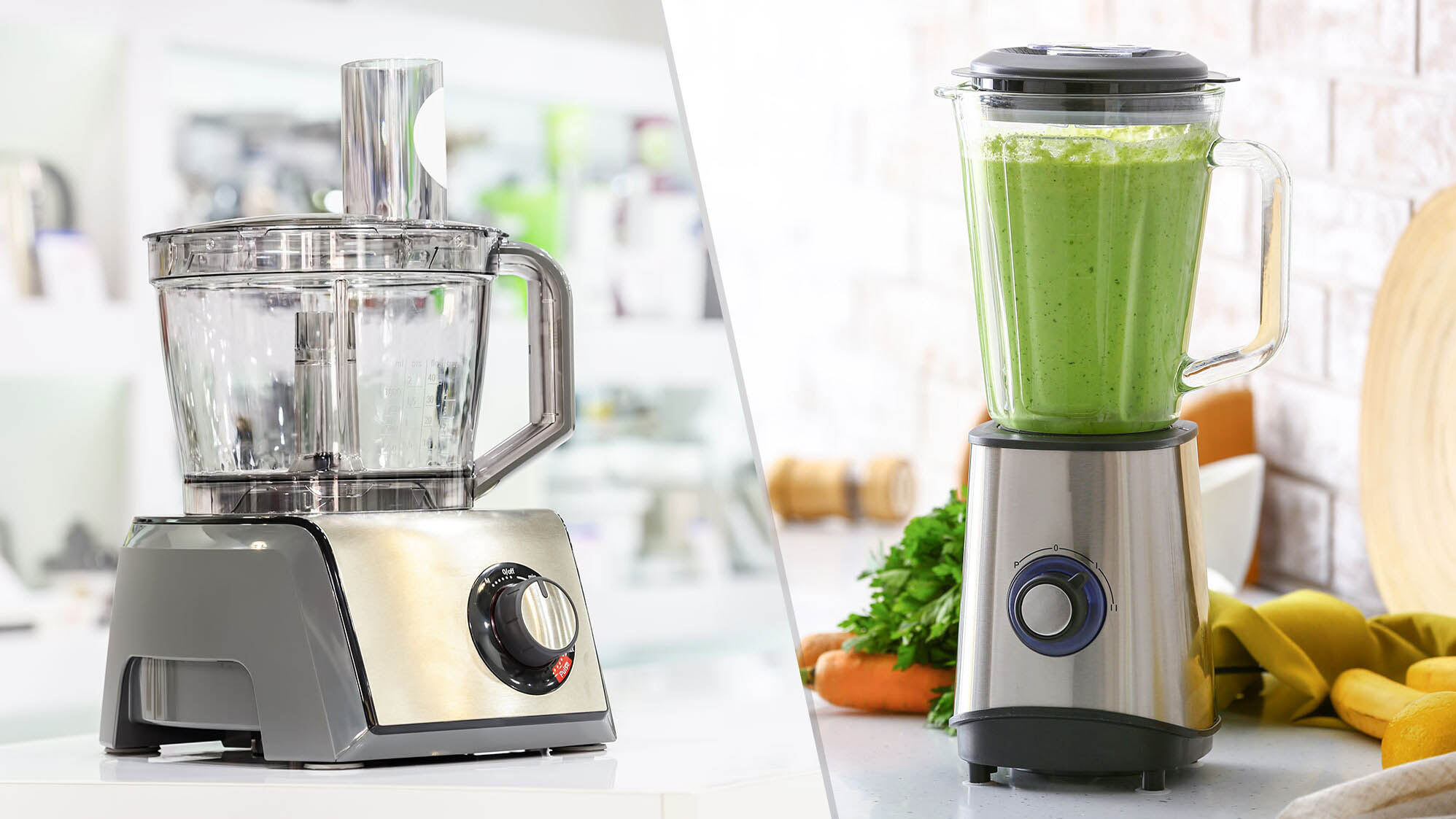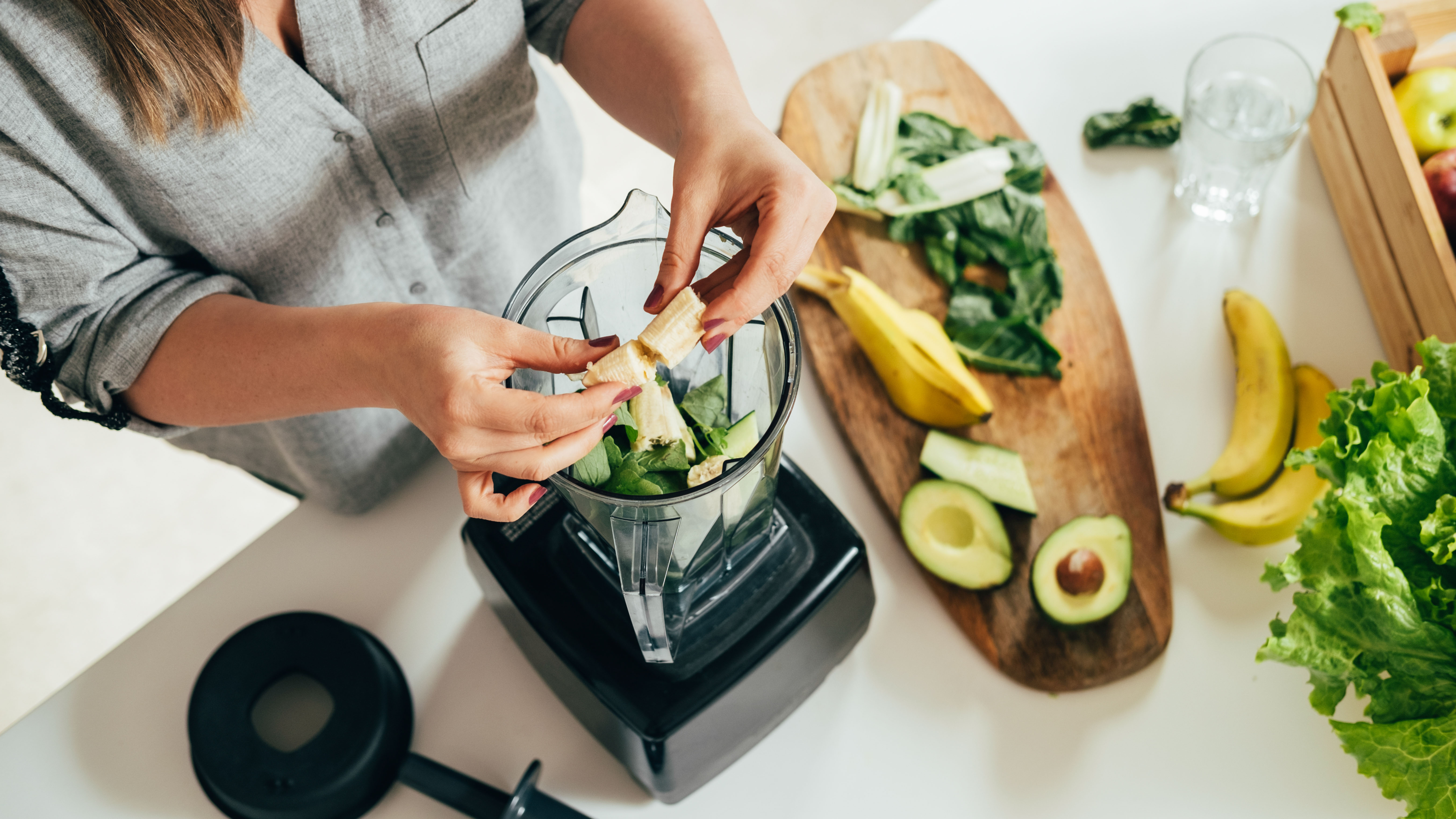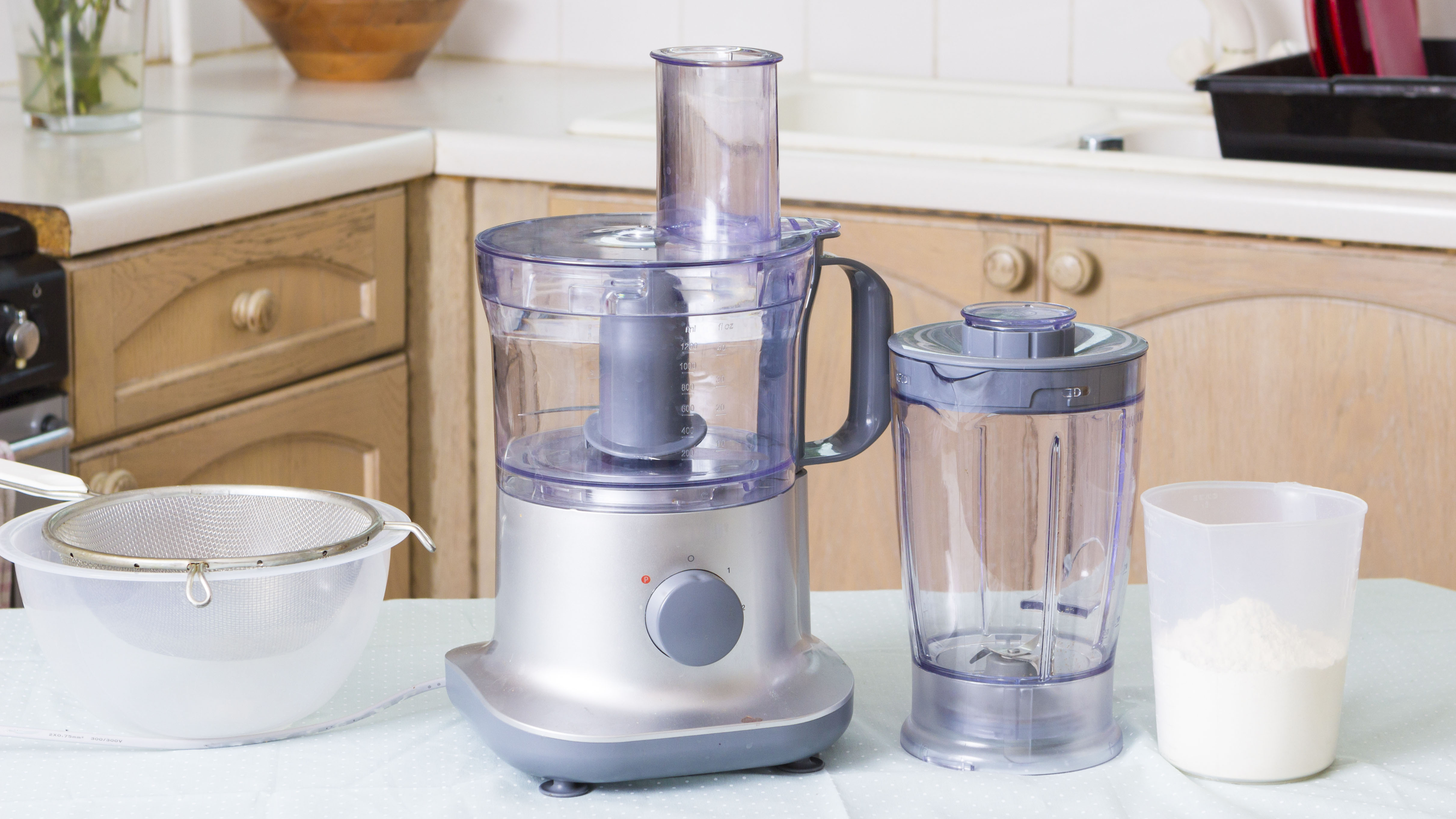Food processor vs. blender: Which should you buy?

Food processor vs. blender is a question all novice chefs will have googled at some point. There are a lot of similarities between these two appliances, both of which have fast-spinning blades at their core designed to chop up food into tiny pieces. However, they are ultimately designed for different purposes.
Here, we will break down the differences between food processors and blenders, and help you come to a decision on which to buy. Once you know which appliance you want, be sure to check out the best food processors and best blenders, so you can get a top performer.
Food processor vs blender: The fundamentals
First of all, you need to understand the function of each appliance. A food processor chops, slices and dices solid ingredients to a precise degree. They’re often used to prepare vegetables to save hours of chopping by hand. Prices can range anywhere from $40 to $250.
Blenders on the other hand will liquify your ingredients into a fluid state. They’re popular for making morning smoothies as well as sauces and dips. Prices for a full-size blender start from about $35 and go as high as $550.
How a food processor works
Food processors are designed to save you the time of chopping ingredients by hand and providing a more consistent result in a matter of seconds. While they’re mostly known for their vegetable chopping abilities, they’re actually quite versatile appliances.
Food processors come with multiple blades and discs which allow them to grate, shred, slice and dice. They can even be used for lesser known food-prep tasks, such as kneading dough or grinding meat. While they handle solid foods, food processors can also be used to puree and create dips and dressings, so there is some crossover with blenders to an extent.

These kitchen countertop appliances vary in size, but they take up a similar amount of space compared to a full-size blender. They come with a base, which often offers a couple of speed settings to give better control of the processing. A removable plastic bowl sits on top with a built-in feed tube.
Get instant access to breaking news, the hottest reviews, great deals and helpful tips.
Depending on which attachment you use, your method of processing will vary. The blade(s) sits at the base of the bowl and can slice and chop ingredients directly. Whereas the discs for grating and slicing are held in a higher position in the bowl, and you ‘feed’ ingredients through it as it rotates via the feeding tube.
Because they come with so many attachments, food processors can be more difficult to store compared to blenders. However, some come with storage cases to keep everything together and to prevent accidents.
How a blender works
Blenders are the more popular choice of these two appliances, and most of us have a better idea of what a blender looks like. Typically, it features a large, tall jug with a small, often fixed, blade at the bottom, which sits on top of a base. These come with more speed settings compared to food processors, and some even feature dedicated programs, such as for smoothies or frozen drinks.
While this would be a typical example of a full-size jug blender, there are smaller options available known as personal blenders. These are essentially used to explicitly make smoothies and the container doubles-up as a cup for on-the-go. Handheld blenders also exist, called immersion blenders. These look completely different to the other types of blender and have their own distinct function. They’re best used for smaller portions of sauces and dips and can provide a more concentrated blend.

Full-size blenders are mostly used to create liquid-based recipes, such as smoothies, soups, sauces and dips. But they can crush ice too, so they’re often used to blend frozen cocktails from scratch, such as mojitos. When blending liquids, this appliance should provide fine and consistent results, with no chunks in sight. It should also be able to puree thicker recipes, such as hummus, in a matter of minutes. Bear in mind, there are certain ingredients that blenders can struggle with though; check out 11 things you should never put in a blender.
Some blenders can also create so much friction as it blends that it heats the ingredients within, essentially producing hot, fresh soup at the touch of a button. Although not all blenders can reach such speeds for a prolonged time.
Once blended, you simply pour the ingredients out of the jug via the spout and you’re ready to serve. Cleaning a blender also couldn’t be easier. You simply add soap and water to the jug, run it on full blend for 10-20 seconds and watch it clean itself. Failing to clean your blender is one of the 7 blender mistakes to avoid at all costs.
Food processor vs blender: Which do you need?
The answer to this question largely depends on what you want to make. Solid food-prep chores require a food processor, while liquid-based recipes, such as soups and drinks call for a blender. It might well be the case that you need both and that’s not unusual to say the least.
Some designs even exist that function as both blenders and food processors. These will save you some storage space, however, in my experience these don’t function as well as the independent models.

My final piece of advice is to only buy what you need. These appliances can be expensive depending on the brand you opt for, and some will end up gathering dust on the kitchen countertop. Make sure you’re going to get some use out of these appliances.
For more kitchen advice, tips, and tricks, check out our guide on how to use an air fryer, how to clean a cast iron skillet, how to clean cast iron stove grates, and 13 things you should never put in your dishwasher.

Katie Mortram used to be a Homes Editor for Tom's Guide, where she oversaw everything from kitchen appliances to gardening tools, as well as smart home tech. Specializing in providing expert advice for cleaning and home manintenance, she now works as Household Advice Editor for Good Housekeeping.
